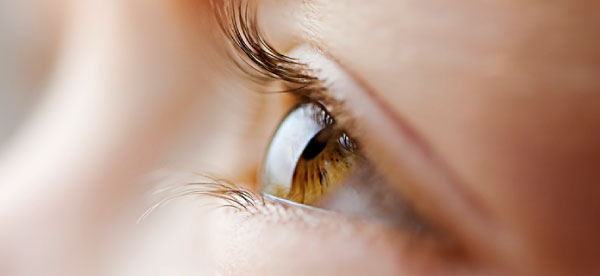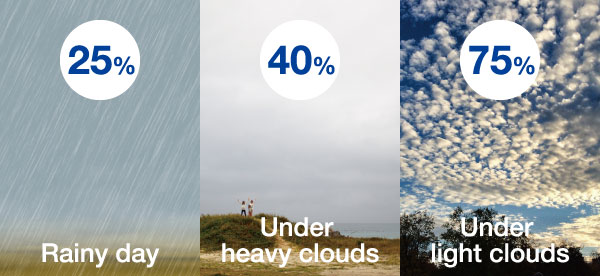UV is not the whole story.
Give your eyes greater protection with UV+420cut™ technology.
UV light and other forms of high-energy light, come not just from sunny skies. They also come at us from cloudy or rainy skies, and even in reflected light*1.
Short-term exposure to UV rays can cause photokeratitis, which is sunburn of the eye. Over a long periods, it can lead to cataracts*2. As for the light we can see, it is made up in part of high-energy visible light (HEV light), which is known to potentially cause Age-related Macular Degeneration (AMD) as we get older*3.
UV+420cut™ technology is used to make clear lenses that cut HEV light in the 400–420 nm part of the spectrum, in addition to blocking all UV wavelengths. This means it provides greater protection against the types of light that can damage the eyes.

Young people are at higher risk for retinal damage, because their lenses are generally more transparent*4.

80–90% of the UV rays get through on days with light clouds vs. clear days. That number is around 60% on cloudy days and 30% on rainy days*5.
Discover the difference between lenses with UV+420cut and regular lenses.
When we talk of greater protection for the eyes on this website, it means protecting eyes against UV rays and certain wavelengths of HEV light.
Reference
*1 WHO Protection Against Exposure to Ultraviolet Radiation 1995
*2 Protection for the naked eye. 2015 UV protection report. The vision council.
*3 Wu, J.; Seregard, S.; Algvere, P.V. Photochemical damgage of the retina. Surv Ophthalmol 2006, 51, 461-481. / Jarrett, S.G.; Boulton, M.E. Consequences of oxidative stress in age-related macular degeneration. Mol Aspects Med 2012, 33, 399-417.
*4 Graefes Arch Clin Exp Ophthalmol. 1996 Jan;234(1):2-11. Light damage revisited: converging evidence, diverging views? Remé C, Reinboth J, Clausen M, Hafezi F.
*5 Japan Meteorological Agency website




